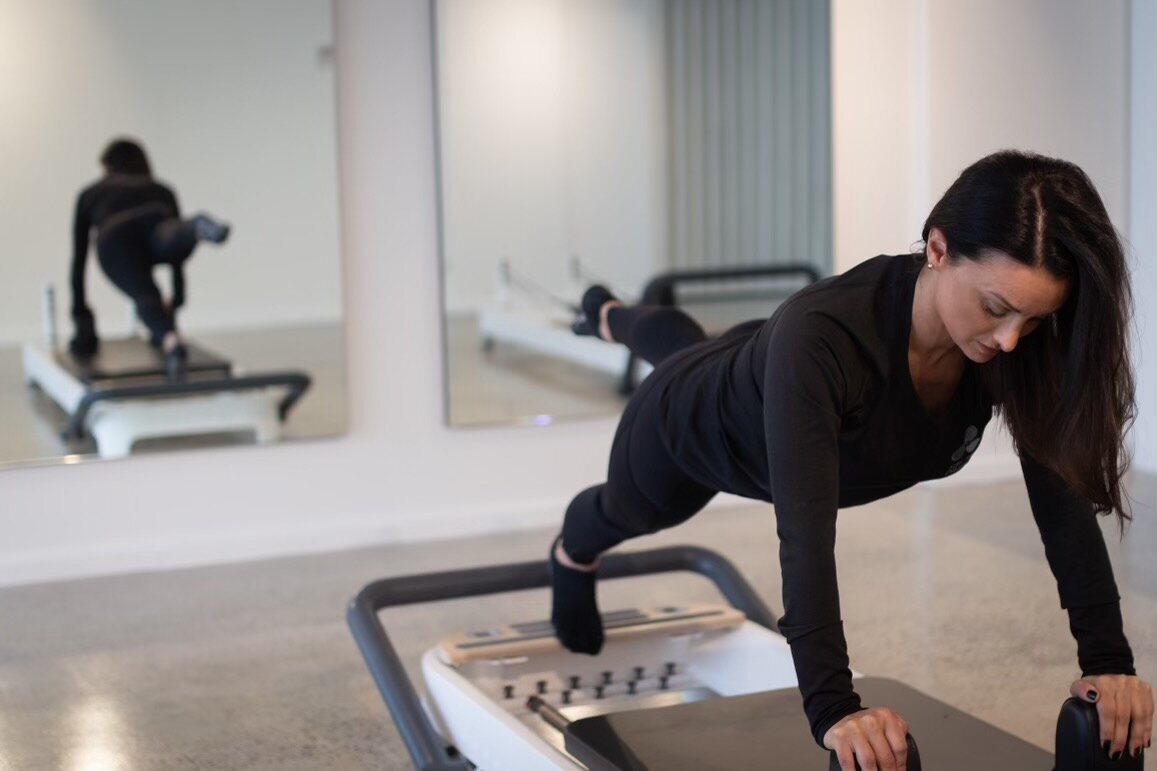The Difference Between Pilates and Yoga
What is Pilates?
The Pilates method was first developed in the early 1920’s by its creator Joseph Pilates. It was created with the purpose to improve core stability, posture, strength and mental elements (Sorosky et al. 2008). Pilates comes in three forms known well to the general population including Mat Pilates, Reformer Pilates and Clinical Pilates. All three forms incorporate the traditional Pilates methods outlined by Joseph Pilates.
If you would like to know more about the differences between each type you can find this on our blog, ‘What Is Reformer Pilates and Why Is It Good for You?’.
What is Yoga?
Yoga is a tradition that originated over 5,000 years ago in Northern India and is still practiced daily around the world. Yoga is an exercise which is a combination of linking the mind, body and spirit, with a major focus on breathing and meditation.
What are the Main Differences Between Pilates and Yoga?
Although both Pilates and Yoga are both low-impact workouts, there are differences between the two. Pilates provides more of a focus on core-strengthening and muscle imbalances whereas Yoga places more of an emphasis on the breath and meditation exercises (Fernandez-Rodriquez et al. 2021).
What are the Similarities between Pilates and Yoga?
Pilates and Yoga are both based on methods and traditions that aim to combine the mind and body as one in practice. Similarly, Yoga and Pilates help to improve muscle tone, flexibility and focus on breathing during exercise.
What are the Benefits of Each?
Benefits of Yoga:
Decreases stress
Relieves anxiety
Improves quality of life
May improve sleep quality
Improve flexibility and balance
Improve strength
Benefits of Pilates:
Improved flexibility and mobility
Targeting small and large muscle groups
Increasing core stability
Increase muscle strength
Increase muscle endurance
Improves posture and balance
Improved muscle tone
Promotes relaxation
Promotes controlled breathing and increases concentration
Decreases risk of injury
What are the Disadvantages of Each?
There aren’t many disadvantages when it comes to Pilates and Yoga. For Yoga, a limitation is that it is limited to mat work only. Due to Pilates being a low impact exercise it may not be suitable as a stand-alone form of exercise if you suffer from specific conditions such as Osteoporosis, this is where our KRP Strength & Conditioning or Studio classes will be of benefit to you.
Is Yoga or Pilates Better for Back Pain?
Both Pilates and Yoga can be both be helpful to assist in managing low back pain (LBP). Pilates has been found to provide pain relief and increase in function in patients with LBP (Lin et al. 2016). It may be more suitable for those suffering from acute and chronic LBP as with use of the Reformer you can incorporate beneficial exercises with the support of the Reformer. We have expert physiotherapists at Keilor Road Physiotherapy who are trained in both Pilates and managing LBP, therefore we will be able to provide a safe and comprehensive program to help you reap all the rewards Pilates has to offer and improve your LBP.
Is Yoga or Pilates Better for Weight Loss?
Combined with a balanced diet and regular exercise this can help to promote weight loss and weight management. There has been no definitive research completed in these two areas however both have been demonstrated to assist with weight loss. Reformer Pilates can be slightly faster paced than Yoga, therefore it may provide greater weight loss benefits for individuals.
How to Choose Between Pilates and Yoga?
Depending on your goals and aspiring health outcomes, this will help you come to a decision that is best for you. If you are seeking more relaxation and flexibility, then Yoga may be the correct choice for you. If you are after building your core strength, stability and a low-impact workout to challenge large and small muscle groups with expert guidance, Pilates at KRP is for you!
What We Offer at KRP?
Here at Keilor Road Physiotherapy we offer Reformer Pilates, Strength and Conditioning and Studio classes to our clients. Reformer Pilates is now taking place in our brand-new Reformer Pilates Studio, fitted out with 7 state of the art Allegro reformers, keeping the classes small so that we can still provide a valued and comprehensive service.
Find out more about our Pilates Classes.
Related links
References:
Fernández-Rodríguez, R., Alvarez-Bueno, C., Reina-Gutiérrez, S., Torres-Costoso, A., Nuñez de Arenas-Arroyo, S., & Martínez-Vizcaíno, V. (2021). Effectiveness of Pilates and Yoga to improve bone density in adult women: A systematic review and meta-analysis. Plos one, 16(5), e0251391.
Lin, H. T., Hung, W. C., Hung, J. L., Wu, P. S., Liaw, L. J., & Chang, J. H. (2016). Effects of Pilates on patients with chronic non-specific low back pain: a systematic review. Journal of Physical Therapy Science, 28(10), 2961-2969.
Sorosky, S., Stilp, S., & Akuthota, V. (2008). Yoga and pilates in the management of low back pain. Current reviews in musculoskeletal medicine, 1(1), 39-47.
Article by
Lochie Armstrong | Pilates
Lochie is a qualified and passionate Pilates teacher, having completed her Certificate IV in Pilates Reformer and Matwork at Breathe Education. She approaches teaching Pilates through current evidence-based practice.



